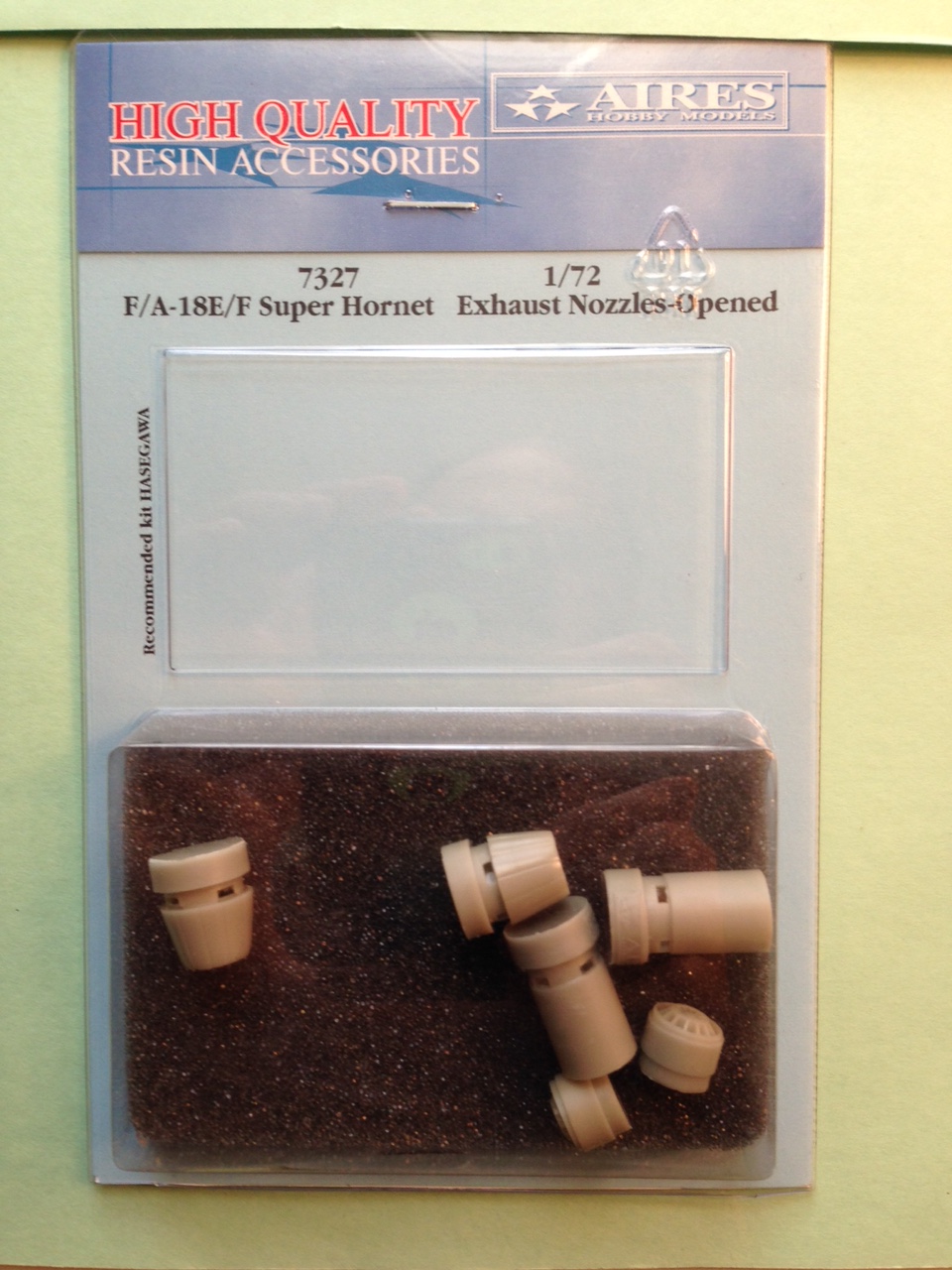F/A-18E/F Super Hornet Exhaust Nozzles (open)
This set is made specifically for Hasegawa’s F/A-18 E/F kits and as Hasegawa’s EF/A-18 G Growler is the F/A-18F kit with extra sprues for the Growler add-ons, it can also be used on the Growler too.
The set consists of 6 resin parts, three for each exhaust. The parts are the actual nozzle, the exhaust can and the rear face of the engine. The parts are extremely well cast, as expected from Aires and in comparing the parts to photographs of the real nozzles, Aires is spot on, capturing the details perfectly.
While many of Aires’ exhaust replacement sets are drop in sets and can be added at any time during a build, the decision to use this set must be made very early, well before joining the fuselage top and bottom together. The reason is that the exhaust cans are much deeper than the kit provided parts and in fact in order to install the exhaust cans, you have to leave out the kit cross piece part and the poly caps that are intended to interconnect the horizontal stabilizers as the cans extend further forward than the cross piece does. I tried shortening the poly caps and inserting them between the exhaust cans and the fuselage sides to help anchor the stabilizers, but they would not stay put and I had to shorten then so much, I doubt they would have helped anyway. You will also need to remember to shorten the pins on the stabilizers in order to get them to fit flush with the fuselage sides as they should.
Even before figuring out where to mount the exhaust cans, the first step is to remove the parts from the pour stubs. Once removed, I painted the rear engine faces burnt metal, adding some steel and silver highlights and a black wash to bring out the cast details. The rear engine faces were then joined to one end of the exhaust cans. Since openings on the exhaust cans exactly match the diameter of the openings on the kit for the exhausts, I elected to superglue the exhaust cans directly to the inside edges of the kit exhaust openings, and found the fit really nice. Another option would be to ream out the kit openings and assembling all three pieces of the exhaust together and sliding the completed unit into the enlarged opening, provided you did not install the cross brace as discussed above.
Since I glued the exhaust cans to the inside of the kit parts, once the fuselage top and bottom were glued together, I had to remove the raised ridge that is molded around the exhaust openings in order to get the new nozzles to fit flush with the kit. The raised edge is used on the kit to accurately position the kit exhaust nozzles, sliding into a keyed slot in the nozzles. I recommend using a new exacto blade when removing this molded on ridge, followed by a flat file to keep the trimmed edge flat across. As shown in the pictures, I tried a sanding stick to flatten out the ridges and ended up sanding off too much; resulting in having to shim the exhaust areas back out with sheet styrene.
While many modern jet engines seem to have ceramic interiors, the F/A-18 E/F/G nozzles are actually almost all metallic on the interior sides with some small white or ceramic tiles spread around the inside of the engine. My painting skills are not good enough for me to hand paint these small tiles, so my nozzles are just burnt iron overall.
These nozzles are very well done and the exterior nozzle parts look great when painted and weathered slightly with a grey wash to highlight the cast details.
Using this set requires an early commitment to do so, as there is work to be done inside the jet to make these new parts fit, but once painted and installed, they are a great addition to the kit and give some needed depth to the exhaust area of the Hasegawa kit.
Highly recommended! Thanks to Aires for the review sample and to IPMS-USA for letting me review it.









Comments
Add new comment
This site is protected by reCAPTCHA and the Google Privacy Policy and Terms of Service apply.
Similar Reviews